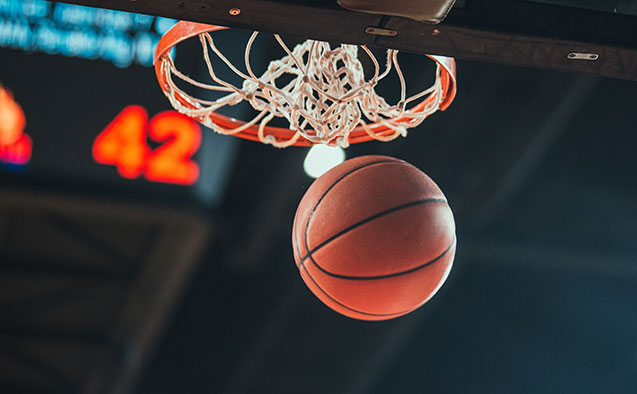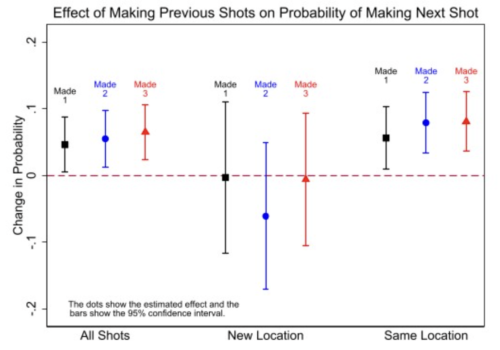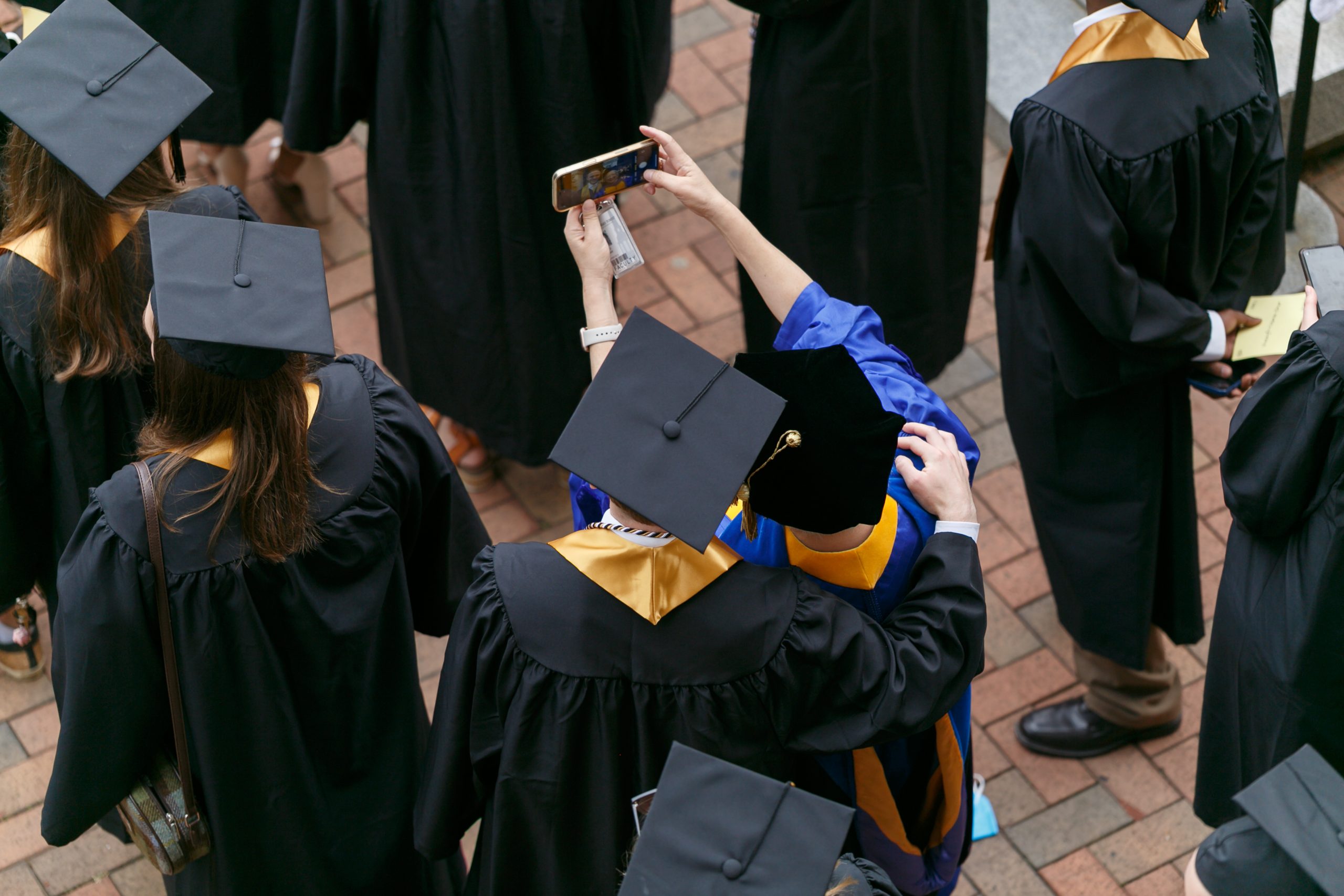‘Hot hand’ is real, but there’s a catch

Fans and players both feel it in the gut when the “hot hand” shows up in sports. Something special is happening that can’t be explained. Cross your fingers the streak continues.
Wake Forest economist Erik Nesson investigated the hot hand phenomenon using statistics from NBA 3-point shooting contests from 1986 through 2019.
The traditional 3-Point Contest consists of five racks spaced evenly around the 3-point line with five balls each – four regular orange balls worth one point each, and one multi-colored money ball worth two points. That’s a maximum score of six points per rack and 30 for the contest. Over the years, the NBA has changed some aspects of the contest but those changes do not affect the study’s results.

Economics professor Erik Nesson
Nesson and co-researcher Robert Lantis of Indiana University found that hot hand exists, but only for shots taken from the same location. The paper, “The Hot Hand in the NBA 3-Point Contest: The Importance of Location, Location, Location,” will be published in the Journal of Sports Economics. In this Q&A, Nesson talks about his research and new takeaways on hot hand.
What is the hot hand?
Most players, fans, coaches, commentators believe the hot hand is widespread in game situations. You only have to watch a few basketball games to hear commentators mention a player as being “on fire” or having hot hand or hot streaks. In our research, Dr. Landis and I wanted to explore if the phenomenon really does exist or if it is a cognitive illusion.
What do these results say about the hot hand in games?
Our paper helps reconcile results from previous hot hand studies which consistently find a hot hand in free throw shooting but do not consistently find a hot hand in field goal shooting in game situations. Our results suggest that while a hot hand does exist in basketball shooting, it is only present when shots are taken from the same shooting location. Thus, it seems unlikely that a hot hand exists in game situations except when shots are taken repeatedly from the same location. This also may explain the difference between free throw shooting, where shots are taken from the free throw line and shots from the run of play, where shots are rarely taken in the same location.

What accounts for the difference?
The important characteristic that ties our results together is shot location. The physiological mechanisms behind a hot hand are extremely sensitive to changes in shot location, and they may be sensitive to changes in other characteristics as well. Controlled shooting situations, especially those where shots are repeatedly taken from the same location like free throws within the same set, will likely exhibit a hot hand effect. However, if players move locations, even around the 3-point arc, this movement disrupts the physiological mechanisms that generate a hot hand effect.
How did you test whether the hot hand is real?
We examined data from the NBA 3-Point Contest. We used the 3-Point Contest because it features many of the same elite basketball players commonly thought to have a hot hand in game situations competing in a high-stakes competition. The 3-Point Contest also mimics game situations in many ways but also isolates the shots from the mix of other factors happening on the court. Only a few papers have tested for a hot hand in the NBA 3-Point Contest.
Why not look at shots in games to see if a hot hand exists there?
Game situations are the most important setting for finding whether a hot hand exists. That is the setting most people have in mind when they think of players “getting hot.” In previous papers, Dr. Lantis and I have examined whether a hot hand exists in NBA basketball game shots, but this question is really difficult to conclusively answer. Players’ shots are often from very different locations, may be minutes apart, and if players believe in the hot hand, both the offense and the defense will respond to a player making a shot. It’s really hard to separate all these effects. That’s why we looked for a setting that is fairly controlled but still mimics real games.
What did you find?
We find that when a player makes a shot in a location, he is more likely to make his next shot in the same location. If a player makes two or three shots in a row, he is even more likely to make his next shot, as long as he’s in the same location as the earlier shots. If he makes one, two or even three shots in a row but moves shot locations before the next shot, he is no more likely to make the next shot than if he had missed his previous shots.
Is the hot hand effect seen in other sports as well? How might it show up, or not show up?
Our results suggest that sports – where there are repeat motions in very similar situations – might exhibit hot hands. Indeed, sports like bowling, horseshoe pitching and tennis display hot hands.
Economics professor Erik Nesson is available for interviews. Contact media@wfu.edu for assistance.
Categories: Faculty, Research, Top Stories
Wake Forest News
336.758.5237
media@wfu.edu
Meet the News Team
Headlines
Wake Forest in the News
Wake Forest regularly appears in media outlets around the world.




